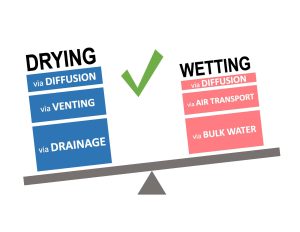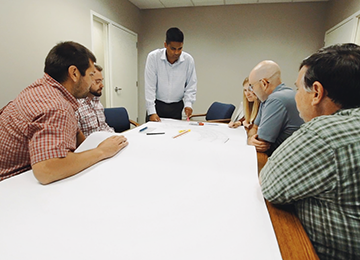This is the continuation to the Moisture and Durability in Voluntary Green Building Certifications series. Read Part I here.
Recent changes in building energy codes include enclosure criteria that minimize building enclosure thermal loads to reduce building’s energy consumption. Some code measures require changes in traditional building enclosure design. Unfortunately, while some energy efficient designs are code compliant, they may adversely impact durability. In addition, many “green” standards lack sufficient measures to ensure long-term durability of wall assemblies. As energy performance requirements increase in buildings, new layers and materials are being added to building envelope assemblies to achieve these efficiency goals.
A balance should be struck between goals for increased energy efficiency and the long-term durability goals of the assemblies. An effective way to achieve both goals is to manage moisture in the building enclosure assemblies. This includes not only selecting materials that are serviceable or have an expected performance life that matches the building’s service life, but also through the design and construction of the assemblies to manage water. A critical principal to embrace is through the service life of a building, moisture intrusion cannot be completely avoided – it must be managed. Moisture enters and exits the building enclosure in many ways. Building assemblies should be designed to manage incidental water that enters a building with minimal long-term impact. This can be accomplished by maximizing drying and minimizing wetting for each building enclosure assembly.

It is important for a project team to be clear about their goals when utilizing a Voluntary Green Building Certification. Aside from LEED v3, all of the Voluntary Green Building Certifications reviewed provide specific additional credit for engaging in the enhanced Building Enclosure Commissioning (BECx) process for the building enclosure. With the open-ended nature of the Owner Project Requirements in the BECx project credits in all of the green certifications, it is important to utilize an enclosure professional with an ANSI-Accredited Personnel Certification Program, like a BCxP, CCP or CxA certification, who can help guide the enclosure commissioning process, perform design reviews, provide construction installation conformance reviews, performance testing of critical enclosure components, and moisture analysis modeling when it’s needed to compare alternatives.
Please contact us with any questions you may have regarding this topic or other facilities questions.

